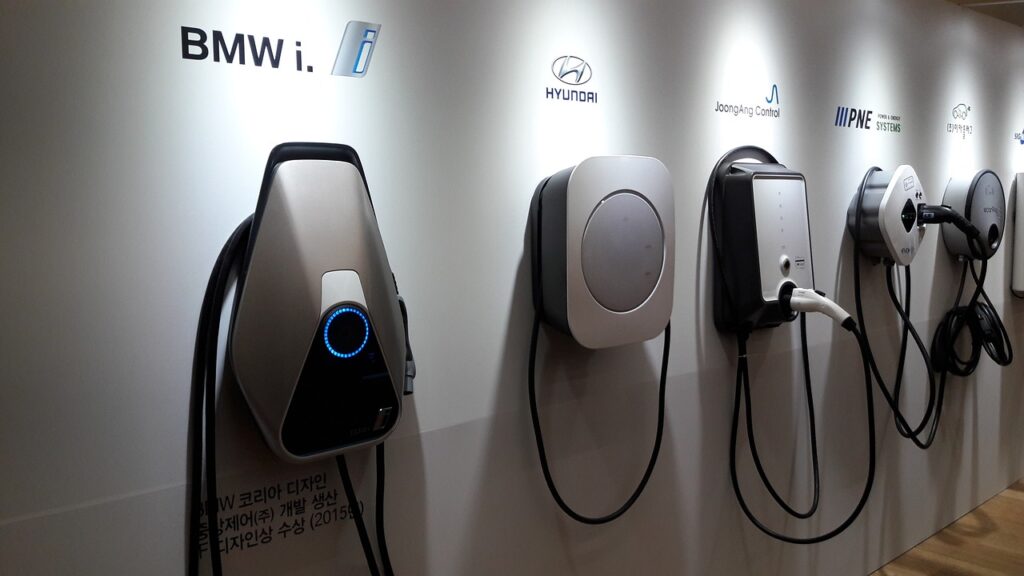
Key Concepts behind SMPS Chargers :An SMPS charger converts high-voltage AC power from the electric grid or a generator into low-voltage DC power suitable for charging the EV battery.
The charger uses power electronics to control the flow of electric current to the battery, and an integrated circuit (IC) to monitor the battery’s voltage and current levels. The charger must provide an output in the form of constant current and constant voltage to charge the battery effectively.
Role of Power Electronics in SMPS Charger :The power electronics in an SMPS charger are responsible for converting the high-voltage AC power to low-voltage DC power, and controlling the flow of electric current to the battery. The power electronics components include a rectifier, a power switch, an inductor, a capacitor, and a diode. These components work together to regulate the voltage and current levels of the charging process.
Key Components in SMPS Chargers :The key components in an SMPS charger include the rectifier, the filter capacitor, the inductor, the switching device, and the control circuit. The rectifier converts the AC voltage to DC voltage, the filter capacitor smoothes the output voltage, the inductor regulates the output current, the switching device controls the output voltage, and the control circuit monitors the battery’s voltage and current levels.
Importance of Constant Current and Constant Voltage Methodology: Lithium batteries are sensitive to overcharging, which can lead to reduced battery life, and even fire or explosion. To prevent overcharging, SMPS chargers use a constant current and constant voltage methodology to charge the battery. The charger provides a constant current until the battery reaches a certain voltage, then switches to constant voltage mode to avoid overcharging.
Control overcharging SMPS technology controls overcharging by using an IC to monitor the battery’s voltage and current levels. The IC adjusts the charging voltage and current levels to ensure that the battery is charged efficiently and safely.

Precaution when charging lithium batteries: Precautions are needed when charging lithium batteries with SMPS chargers. The battery must be monitored constantly to prevent overcharging, and the charger must be designed to provide a safe and efficient charging process. A thermal management system must also be implemented to prevent the battery from overheating.
Role of Integrated Circuit: The integrated circuit (IC) in an SMPS charger is responsible for monitoring the battery’s voltage and current levels, and controlling the charging process. The IC ensures that the battery is charged efficiently and safely, and provides protection against overcharging and overheating.
Programming Language for IC The programming language required to program the IC depends on the specific IC used in the charger. Some common programming languages for ICs include C, C++, and assembly language.
Latest Developments in SMPS Technology: Recent developments in SMPS technology include the use of GaN (Gallium Nitride) transistors, which offer higher efficiency and power density than traditional silicon-based transistors.

Other advances : Include the development of wireless charging technology for EVs, which uses an SMPS charger to transfer power wirelessly to the battery.
To learn more about SMPS chargers and their role in EV battery charging technology, check out the following resources:
“Switch-Mode Power Supplies, Second Edition: SPICE Simulations and Practical Designs” by Christophe Basso
“Switching Power Supply Design and Optimization, Second Edition” by Sandra R. Julian and Martin C. Cao “
The Fundamentals of Power Supply Design” by Robert A. Mammano “Electric Vehicle Charging Technology: Charging Systems,
Power Electronics, and Smart Charging” by Sumedha Rajakaruna and Prasad Yarlagadda
